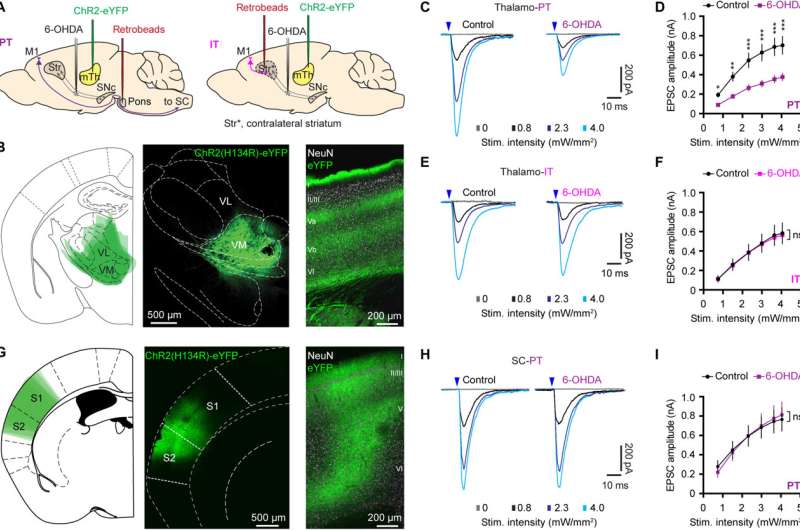Home » Health News »
Repairing broken brain circuits may offer path to new Parkinsons treatments

Van Andel Institute scientists have identified a series of processes that help the brain adapt to damage caused by breakdowns in circuits that govern movement, cognition and sensory perception.
Because such breakdowns contribute to Parkinson’s disease, the findings may one day help researchers optimize current treatments or develop new ones that repair or bypass the broken circuits.
A study describing the findings published this week in the journal Science Advances.
“Our work highlights the importance of brain circuits in Parkinson’s and offers another path forward for new treatment strategies,” said study senior author and VAI Assistant Professor Hong-yuan Chu, Ph.D. “We are hopeful that this work will add to the scientific foundation for future therapies that better manage symptoms.”
The findings center on the thalamus and the cerebral cortex, two regions of the brain that support movement and sensory perception. Despite their importance, relatively little is known about how exactly circuits in these vital areas impact and are impacted by Parkinson’s.
Chu and colleagues found that certain broken circuits in the thalamus and cortex can be repaired using agents that suppress disease-related messages from the basal ganglia, another brain region implicated in Parkinson’s disease.
Their findings also suggest circuits in the thalamus and cortex may be impacted by two current Parkinson’s disease treatments: dopaminergic medications and deep brain stimulation, both of which help mitigate symptoms but do not slow disease progression. The effectiveness of both options can vary from person to person.
“The cortex has long been considered a potential target for noninvasive treatment but research to date has been stymied by a limited understanding of what goes wrong in cortical circuits,” Chu said. “This study is a first step toward remedying that problem and offers a clearer picture of both circuitry dysfunction and potential therapeutic strategies.”
More information:
Liqiang Chen et al, Reduced thalamic excitation to motor cortical pyramidal tract neurons in parkinsonism, Science Advances (2023). DOI: 10.1126/sciadv.adg3038
Journal information:
Science Advances
Source: Read Full Article


